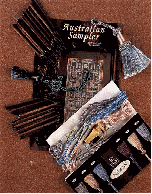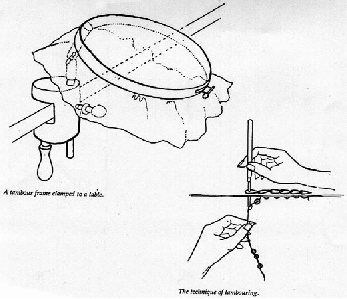 Loading... Please wait...
Loading... Please wait...Online Store
- Catalogue
- Projects by Designer
- Dorothy Clarke
- Margaret Timmins
- Pamela Ross
- Irene Junkuhn
- Helen Dafter
- Alison Snepp
- Alison Cole
- Ana Mallah
- Angela Watson
- Ann Thomas
- Annette Johnson
- Avril Hayward
- Belinda Ingram
- Bobbie Watts
- Betsy Bee
- Bets Maas
- Bev Tully
- Brenda Sortwell
- Cate Grundy
- Catherine Howell
- Cathy Grant
- Christine Simpson
- Christine Sumner
- Dawn Elsbury
- Debbie Van As
- Deena Gillies
- Del Gordon
- Delma Moore
- Donna Cummings
- Dorothy Addlem
- Frances Langenberg
- Frances Worland
- Gladys Clough
- Helan Pearce
- Heather Lownds
- Heather McCallum
- Helen Muth
- Helen Norton
- Helen Reeves
- Igne Iplik
- Jan Bergman
- Jan Watts
- Jane Ellis
- Jennifer Bennett
- Jo Marley
- Jenny McWhinney
- Joan Walters
- Judith & Kathryn
- Judy Jeroy
- June Everett
- Karyn Mackenzie
- Kay Arbuckle
- Keith Lamb
- Kelly Jo Sayer
- Kerryn Murphy
- Liz Vickery
- Liz Walsh
- Louise Howland
- Margaret Lee
- Margot Hammonds
- Marilyn Whitebread
- Maxeen Storer
- Maryanne Dodson
- Michelle Stacey
- Michelle Stieper
- Naomi Anne
- Pamela Gurney
- Pauline Bright
- Phillipa Cox
- Rhonda Inwood
- Rosemary Walker
- Robyn Coombs
- Ruth Marshall
- Sandra Thornley
- Sibille Kreideweiss
- Stephanie Burnham
- Stephanie Coombs
- Sue Strom
- Susan Scott
- Sybil Kreidweiss
- Taetia McEwen
- Terry Jarvis
- Victoria Broad
- Vivienne Garforth
- Vivienne Holmes
- Yvonne Watts
- Projects by Publication
- A Needle Pulling Thread
- Australian Country Craft and Decorating
- Australian Homespun
- Australian Smocking and Embroidery
- Beadwork
- Beautiful Beading with Judith & Kathryn
- Beautiful Embroidery with Judith & Kathryn
- Better Homes and Gardens
- Christmas Embroidery
- Classic Stitches
- Craftwise
- Creative Embroidery and Cross Stitch
- Creative Embroidery and Cross Stitch
- Curls and Swirls
- Vol 21 No 10
- Vol 21 No 11
- Vol 21 No 12
- VOL 22 NO 10
- Vol 22 No 10
- Vol 22 No 5
- Vol 22 No 6
- Vol 22 No 7
- Vol 22 No 8
- VOL 22 No 9
- Vol 22 no3
- VOL 23 NO 7
- Vol No 10
- Vol 21 No 9
- Vol 21 No 8
- Vol 21 No 7
- Vol 21 No 6
- Vol 21 No 5
- Vol 21 No 4
- Vol 21 No 3
- Vol 21 No 2
- Vol 21 No 1
- Vol 20 No 12
- Vol 20 No 10
- Vol 20 No 9
- Vol 20 No 8
- Vol 20 No 7
- Vol 20 No 6
- Vol 20 No 5
- Vol 20 No 4
- Vol 20 No 3
- Vol 20 No 2
- Vol 20 No 1
- Vol 19 No 12
- Vol19 No11
- Vol 19 No 10
- Vol 19 No 8
- Vol 19 No 7
- Vol 19 No 6
- Vol 19 No 5
- Vol 19 No 4
- Vol 19 No 3
- Vol 19 No 1
- Vol 18 No 12
- Vol 18 No 10
- Vol 18 No 9
- Vol 18 No 5
- Vol 18 No 4
- Vol 18 No 2
- Vol 17 No 12
- Vol 17 No 9
- Vol 17 No 8
- Vol 17 No 7
- Vol 16 No 6
- Vol 16 No 5
- Vol 16 No 4
- Vol 16 No 2
- Vol 15 No 11
- Vol 15 No 10
- Vol 15 No 8
- Vol 15 No 6
- Vol 15 No 5
- Vol 14 No 12
- Vol 14 No 11
- Vol 14 No 10
- Vol 14 No 9
- Vol 14 No 6
- Vol 14 No 3
- Vol 14 No 2
- Vol 13 No 10
- Vol 13 No 7
- Vol 13 No 6
- Vol 12 No 6
- Vol 12 No 4
- Vol 12 No 1
- Vol 11 No 10
- Vol 11 No 9
- Vol 11 No 8
- Vol 11 No 5
- Vol 11 No 3
- Vol 10 No 11
- Vol 10 No 10
- Vol 10 No 9
- Vol 10 No 5
- Vol 9 No 10
- Vol 9 No 8
- Vol 9 No 7
- Vol 9 No 4
- Vol 9 No 3
- Vol 9 No 1
- Vol 8 No 11
- Vol 8 No 10
- Vol 8 No 5
- Vol 8 No 4
- Vol 8 No 3
- Vol 8 No 1
- Vol 7 No 9
- Vol 7 No 8
- Vol 7 No 6
- Vol 7 No 5
- Vol 7 No 4
- Vol 7 No 2
- Vol 6 No 10
- Vol 6 No 8
- Vol 6 No 7
- Vol 6 No 5
- Vol 6 No 3
- Vol 6 No 1
- Vol 5 No 6
- Vol 5 No 5
- Vol 5 No 4
- Vol 5 No 2
- Vol 4 No 3
- Vol 3 No 3
- Vol 1 No 1
- Elegant Ribbon Embroidery
- Embroidery Canada
- Handmade
- Igne Iplik
- Inspirations
- Meins et Merveilles
- Needlecraft
- Patchwork & Stitching
- Sew Beautiful
- Stitch UK
- On Sale
Popular Brands
Our Newsletter
- Home
- Learn How to...Use Art Silk
- Use Tambour Hooks
Use Tambour Hooks

How To Use Tambour Hooks
There is some uncertainty about the origins of the tambour hook, opinions varying as to whether it originated in China or India.
Chain stitch can be produced with great speed using the tambour hook. The technique is generally used with a frame (the name tambour comes from the tambour -drum frame). The size of the hook varies according to different work requirements. The hook is put through the fabric, the art silk thread put on the hook, the hook is turned through 90 degrees and pulled up through the fabric to the surface. The hook is then turned back through the 90 degrees (reverse action) to the starting point. The stitching is begun with a knot, a twist in the first chain stitch or a chain stitch worked back on itself. To finish off, the embroiderer makes a couple of chains on the surface through the lead thread, with an action like that used in crotchet. When a line or area of stitches has been completed, and another stitched area is to be worked, a long thread is left trailing from one area to the other on the reverse side of the fabric. The next stitch can be worked away from this new point, starting with a chain stitch. If the next line is some distance away, or a new colour is to be used, the thread is cut.

Cut beads from Sadi, or use beads of choice. shisha, sequins and pieces of sadi may be applied using the tambour hook. They are applied individually to the right side of the fabric.
The hook is disconnected from the thread when a sadi bead or sequin is to be attached. The sadi is pushed high onto the hook, and the hook is then pushed through the fabric to engage the thread in the usual way. When the hook returns to the surface, the thread is pulled through the bead before entering the fabric again to make the next stitch. If the next stitch is to have a sadi piece, the hook is disconnected so that the sadi bead can be placed on the hook.
Deena Gillies Tips
Always hold the hook straight up and down (vertically) on the top side of your work when you are stitching. The set screw always faces the direction in which you are stitching. The other hand is under the fabric and feeds the thread onto the hook for each stitch.
Starting the threads:
There are a number of ways to start the work – the two use most often when learning are:
- A small knot in the end of the thread can be used to secure it.
- Leave a 2” tail at the back of your work as you begin, this will be woven into the threads as you work thus securing them.
Insert the hook through the fabric, catch up the thread on the underside and pull it through to the right side of your work creating a loop. If you apply a little backwards pressure against the fabric as you bring hook to the topside of your work you will find it less likely to catch on the fabric as you work.
Re-insert the hook through the fabric and repeat the process of catching the thread on the underside of the fabric and bring it back to the working surface and slip the new loop through the old to form the chain.
Continue in this manner until the design area is covered.
Finishing the threads:
To finish off you can either:
- After working the last loop pull the thread tail through to the right side of the work and using a needle thread it down over the last loop (as we do with a lazy daisy stitch) thus securing it and then weave the remaining tail end through a few stitches at the back of your work to secure it.
- Insert the hook through the fabric from the underside of your work and pull through the last loop. Feed the tail end of your thread through this loop thus making a knot and weave the remaining tail section through a few of the stitches at the back of your work to secure it.
When learning this technique you will make it easier on yourself if you work with tightly twisted threads. Once you have become familiar with the technique you will find this an exciting and quick method of embroidery!